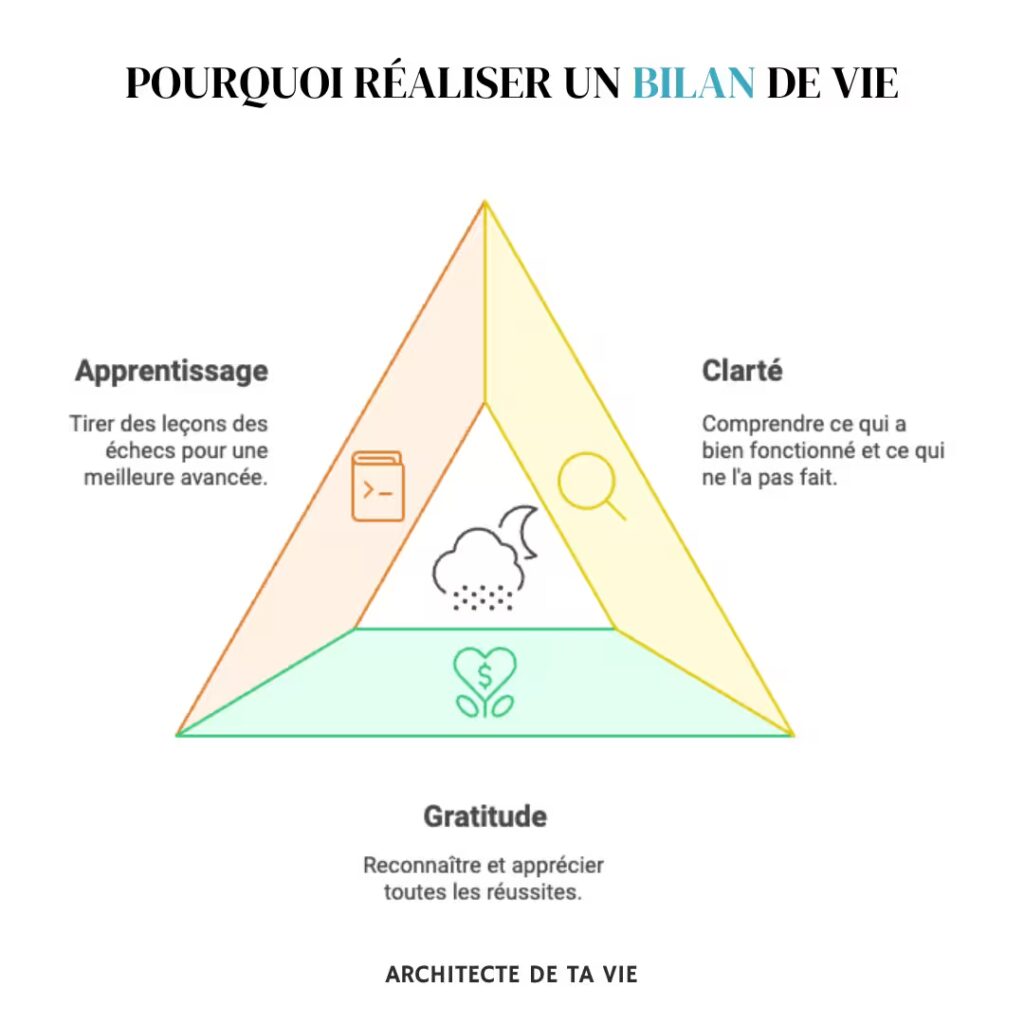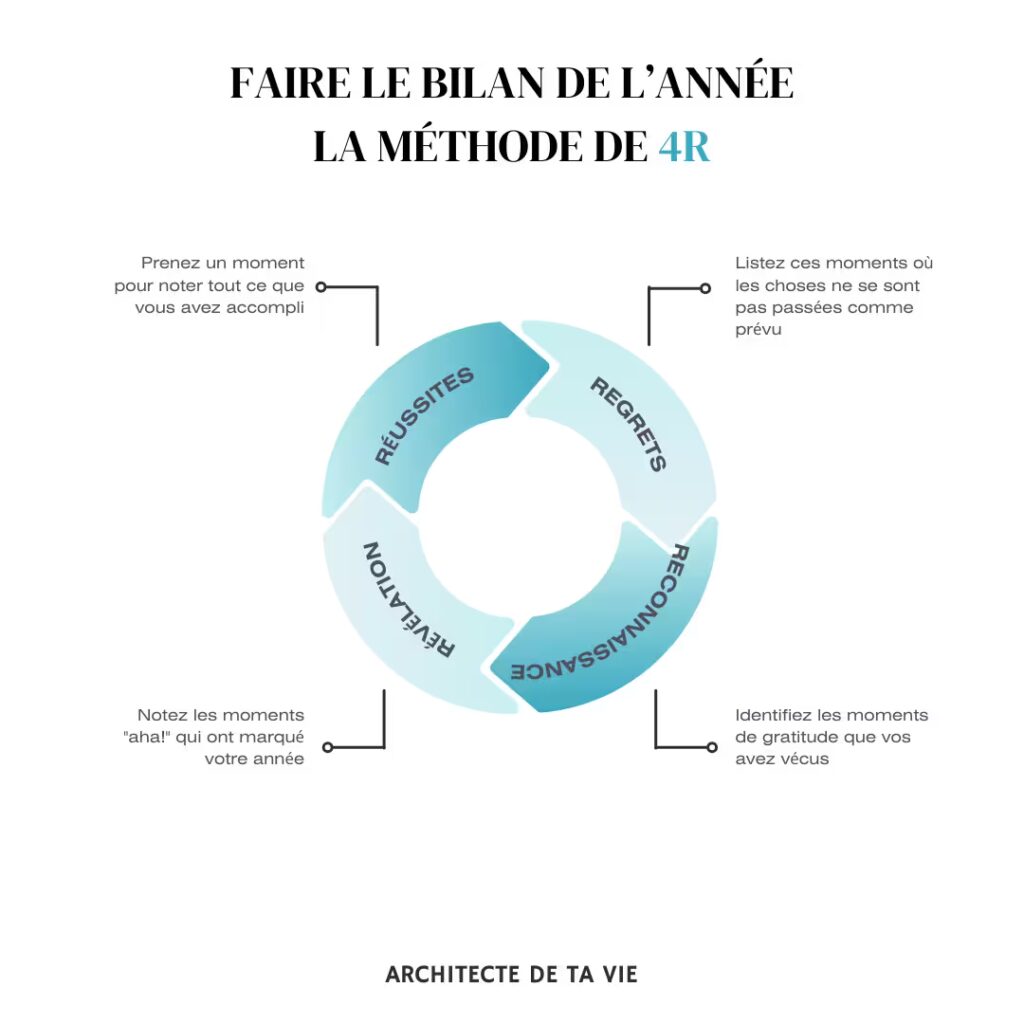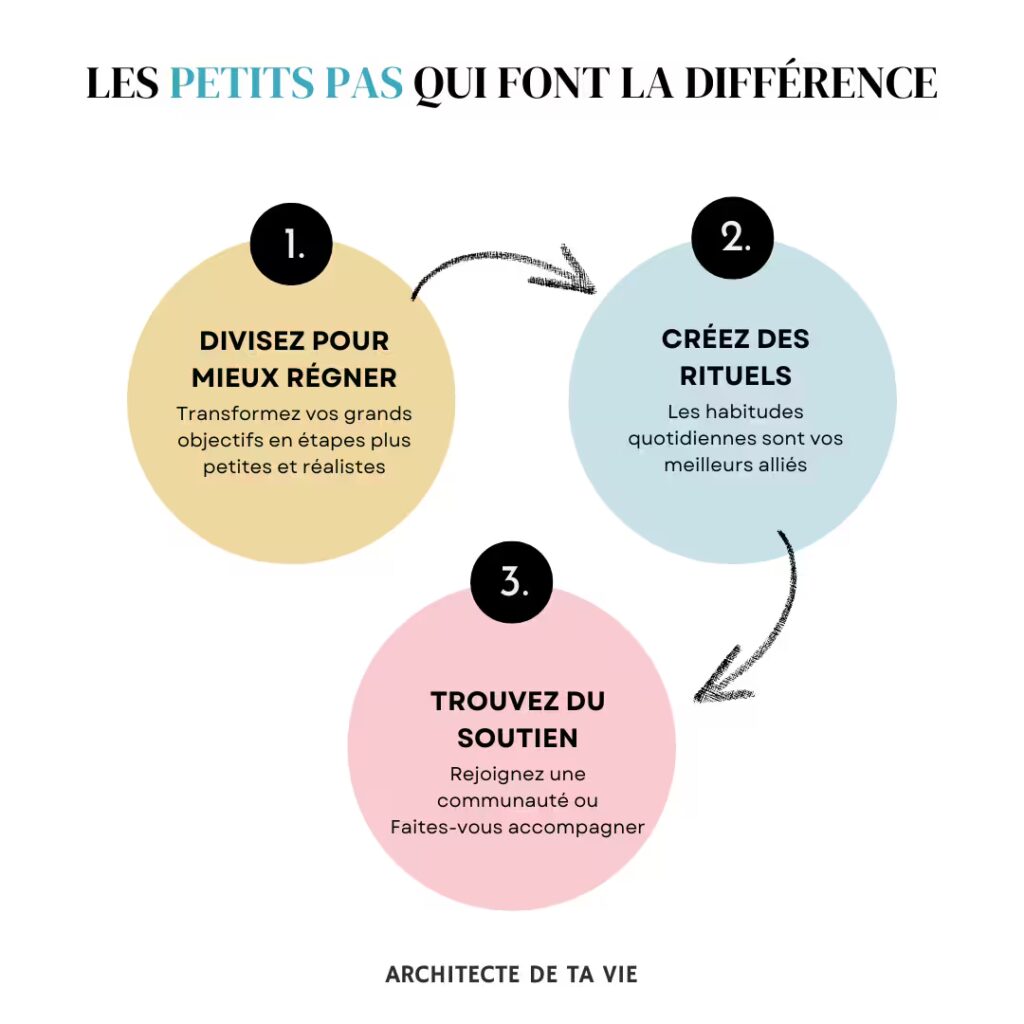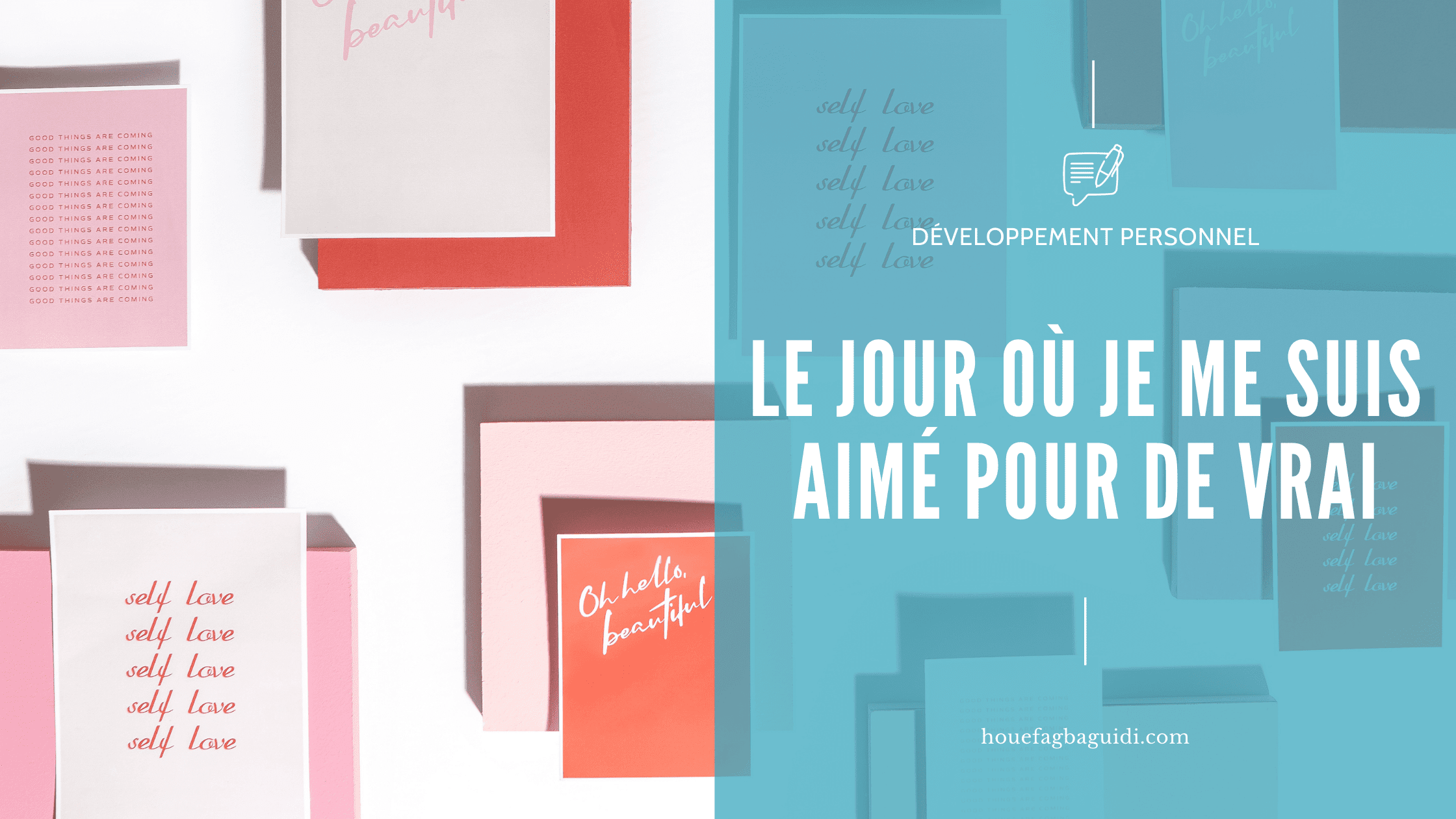How to make a positive assessment of the year and create a fulfilling 2025: are we talking about it?
Dernière mise à jour de l'article le 17 September 2025
This article is part of the carnival of articles “Your best tip for implementing your good resolutions” from the blog Devenez meilleur.
I really enjoy this blog, and my favourite article is Asking yourself the right questions.
Just imagine: it’s 29 December, with a steaming cup of tea in your hand. In the precious calm between festivities, before the whirlwind of January begins again, you finally have a moment to breathe.
That’s when your mind naturally starts to wander back to the past year: what have you achieved? What moments stood out for you? What challenges have you overcome?
Then, like a film in progress, you project yourself into the future: What do you want to see, feel and experience over the next 12 months?
This suspended moment, between assessment and projection, is a real gift that we should all give ourselves. Yet I see so many people rush through their resolutions without taking the time to really understand what happened in their year. What if we did things differently this time?
In this article, I’ll take you step by step through the process of turning your thoughts into concrete actions and laying the foundations for a year 2025 that is fully aligned with your values, talents and aspirations.
Why take the time to do a real assessment?
Let me tell you the story of Hélène, an employee I coach. When she logged in for our coaching session at the beginning of December, she was convinced that she had ‘wasted her time’ this year. Her eyes were downcast, her shoulders tense.
But when we sat down together to look at her progress, you know what we discovered? Not only had she achieved 80% of her objectives, but she had also developed new skills that she hadn’t even noticed!
It’s amazing how deceptive our perception can be, isn’t it?
Like Hélène, we all have this tendency to focus on what we haven’t yet achieved, leaving in the shadows the small and big victories that have marked the last 12 months.
That’s the way our brains work: they retain negative experiences more easily than positive ones.
That’s precisely why I always stress the importance of taking this time out. It’s not time wasted, it’s a real investment in your future.
And I’m going to show you how to do it effectively!

How can you take stock of the past year in a way that makes sense?
I’m going to share with you a method you can use to take stock of the past 12 months. This method will transform the way you look at your career. I call it the 4Rs method!
Step one, Successes.
No, don’t skip this part! I know we often tend to downplay our successes, but this is ultra important. Take a moment to write down everything you’ve achieved.
Here’s an example from Thomas. During our review session, he was focused on a project that hadn’t come to fruition. But as we dug deeper together, we came up with a list of his successes: the implementation of a new strategy, and above all, the development of his leadership with his team. Just goes to show that success can sometimes be found where you least expect it!
Let’s move on to Regrets.
Yes, those moments when things didn’t go according to plan. But wait before you wince!
Let me give you another example: Sarah regretted having ‘lost’ six months on a project that had been cancelled. By exploring this experience together, she realised that this period had enabled her to develop an expertise in crisis management and to strengthen her relationships with cross-functional teams.
These regrets are actually goldmines for learning and growing.
Recognition is the time to say thank you.
To yourself first, for everything you’ve done. Then to others, for their support.
For example, Marine had a breakthrough during this exercise. When she listed the people who had supported her during her career transition, she realised how important her network was. She even decided to create a daily ritual of practising gratitude to remember those moments that were important to her!
Yes, it’s amazing how this exercise can change our perspective on the past year.
And finally, the Revelations. Those ‘aha!’ moments that marked your year.
Laurent thought his dissatisfaction stemmed from his salary. When he took stock, he realised that what he was really looking for was more autonomy and creativity in his projects.
This realisation enabled him to renegotiate his position rather than resign.
These revelations can really change everything!
The 4Rs method isn’t magic, but it does allow you to see your year in a completely different light. And above all, it lays the foundations for building a new year that really reflects you.

Practical exercise: 4 questions to give meaning to your year
To help you get started, I’d like to suggest four questions that I use with my clients. They may seem simple at first, but they have the power to reveal surprising aspects of your year.
- What are my top 3 successes of the year? → Remember that successes aren’t always where you imagine them to be!
- What challenge has taught me the most about myself? → I love this question because it turns challenges into learning.
- What relationships have nurtured me or held me back? → This question often reveals relationships that energise you or, on the contrary, can be toxic.
- If I had to give one word to this year, what would it be? → This last exercise is particularly powerful because it invites you to take a step back over the last 12 months.
Take the time to answer these questions. Maybe not right away, but find a quiet moment, with your favourite drink, a notebook and a pen. The magic often happens in these moments of quiet reflection, when we finally allow ourselves to look back on our career with kindness.
💡 Tip: Write down your answers and keep them. In a year’s time, you’ll be surprised at how much your perception will have changed!
And what about the New Year?
Forget the traditional New Year’s resolutions that fade away even before the end of January! I’m going to share with you a different approach, one that really works.
Write to your future self
Let’s start with an exercise: the letter from the future. Imagine that you are writing a letter from 31 December 2025. But be careful, it’s not just a wish list. I want you to really immerse yourself in this future moment. What do you feel? Who is around you? What have you achieved?
Julie, whom I coach, used this exercise to completely rethink her approach. When she started this exercise, all she could think of were professional objectives: ‘promotion’, ‘raise’, ‘new project’. But as she wrote her letter, something clicked. She saw herself enjoying her Wednesday afternoons with her children while managing a more autonomous team. She described how her new rhythm of work meant she could finally take up sport again, which gave her more energy in the office. In her letter, all the areas of her life fed off each other rather than competing with each other.
The key to all this? Alignment. It’s like a made-to-measure suit: it doesn’t just have to look good, it has to fit you perfectly.
The importance of alignment with your values
Did you know that 80% of resolutions fail before February? This often happens because they’re not aligned with your values.
💬 Example: If “freedom” is a key value for you, setting a goal that locks you into a strict routine will be doomed to failure.
For example, if you value autonomy but set goals that make you dependent on the approval of others, it won’t do… Think about how your values are in line and aligned with the goals you’ve set yourself for the new year.
That’s true alignment: when your goals resonate deeply with who you are.
Take a moment to reflect: are your plans for 2025 really aligned with your deepest values? Or are you following a path suggested to you by others?
💡 Practical tip: Before writing your letter about the future, take 10 minutes to list your 5 essential values. They’ll be your compass for imagining a future that’s truly you.
And if you don’t yet know which values are most important to you, I invite you to take this free online test: Identify your values.

How about discovering some other tips for starting the New Year in style?
You might like this article: 3 tips for keeping your New Year’s resolutions.
Drawing your ideal year
The year ahead of you is a blank page. Here are three simple steps to help you start drawing it with intention:
(1) Imagine yourself next December : Close your eyes. You are in December 2025, sitting in your favourite place. What do you see around you? What have you achieved? What emotions do you feel? Be specific in your vision.
(2) What are the 3 areas of your life where you would like to see significant change? Identify the three areas of your life that need significant change. Perhaps your health needs more attention, your professional life needs a new lease of life, or your personal relationships need more depth.
(3) For each area, write down a clear and inspiring intention that resonates with your deepest values.
💡 Tip: Turn your intentions into positive affirmations. E.g.: “I’m cultivating a career that I’m passionate about and that respects my life balance.”

The small steps that make a difference
Do you know what really makes the difference between a dream and an achieved goal? It’s how you cut the path.
Take launching an entrepreneurial activity. Instead of seeing it as an impossible mountain to climb, you break it down into small steps: first define your offer, then create your website, develop your online presence, and so on.
And don’t forget the importance of daily rituals. I’m not talking about revolutionising your life overnight, but rather about slowly integrating new habits that will bring you closer to your goals. Perhaps 20 minutes of meditation in the morning, or a weekly review of your progress on Sunday evening.
Here are 3 steps you can take to get started:
Step 1: Divide and conquer
Turn your big goals into smaller, realistic steps.
Example: ‘Write a book’ → Step 1: Choose the topic. Step 2: Write an outline. Step 3: Write 500 words a day.
Step 2: Create rituals
Daily habits are your best allies.
Example: Set aside 15 minutes each morning to visualise your ideal day.
Step 3: Find support
– Join a community: Sharing your goals with like-minded people boosts motivation.
– Get support: A coach can help you remove any obstacles and stay on track.

Managing obstacles (because there will be some!)
Let’s be honest, there will be difficult moments.
That’s normal, that’s life! The important thing is not to avoid obstacles, but to know how to deal with them when they arise.
Here are three essential strategies for developing your resilience:
1. The gradual approach: Start with manageable challenges. Each small success strengthens your confidence. Like a muscle that develops gradually, your resilience is built up step by step.
2. Plan B: Anticipate potential obstacles and prepare alternative solutions. It’s like having an alternative road map: if one road is blocked, you already know which way to go.
3. The anchor point: Identify what helps you stay on course in difficult times: a morning routine, a mentor, a rejuvenating activity. These anchors will be your precious allies when the winds are against you.
💡 Practical tip: Make a note of the obstacles you’ve already overcome. They’re proof of your ability to bounce back and a source of inspiration for future challenges.“

If you’re looking for advice on how to get this new year off to a good start, take a look at this article: 5 tips to get the year off to a good start!
Conclusion: Become the architect of your life!
Remember that what you build today will lay the foundations for your future. Don’t let your dreams remain vague ideas. Take the reins and become the architect of your life.
So, are you ready to take this time for yourself? To create a 2025 that’s really you?
I’d be curious to know what action you’re going to take as a result of reading this article.
Please don’t hesitate to contact me if you’d like me to support you in this process. I offer individual sessions to help you clarify your vision and define your action plan for 2025.



Leave a Reply